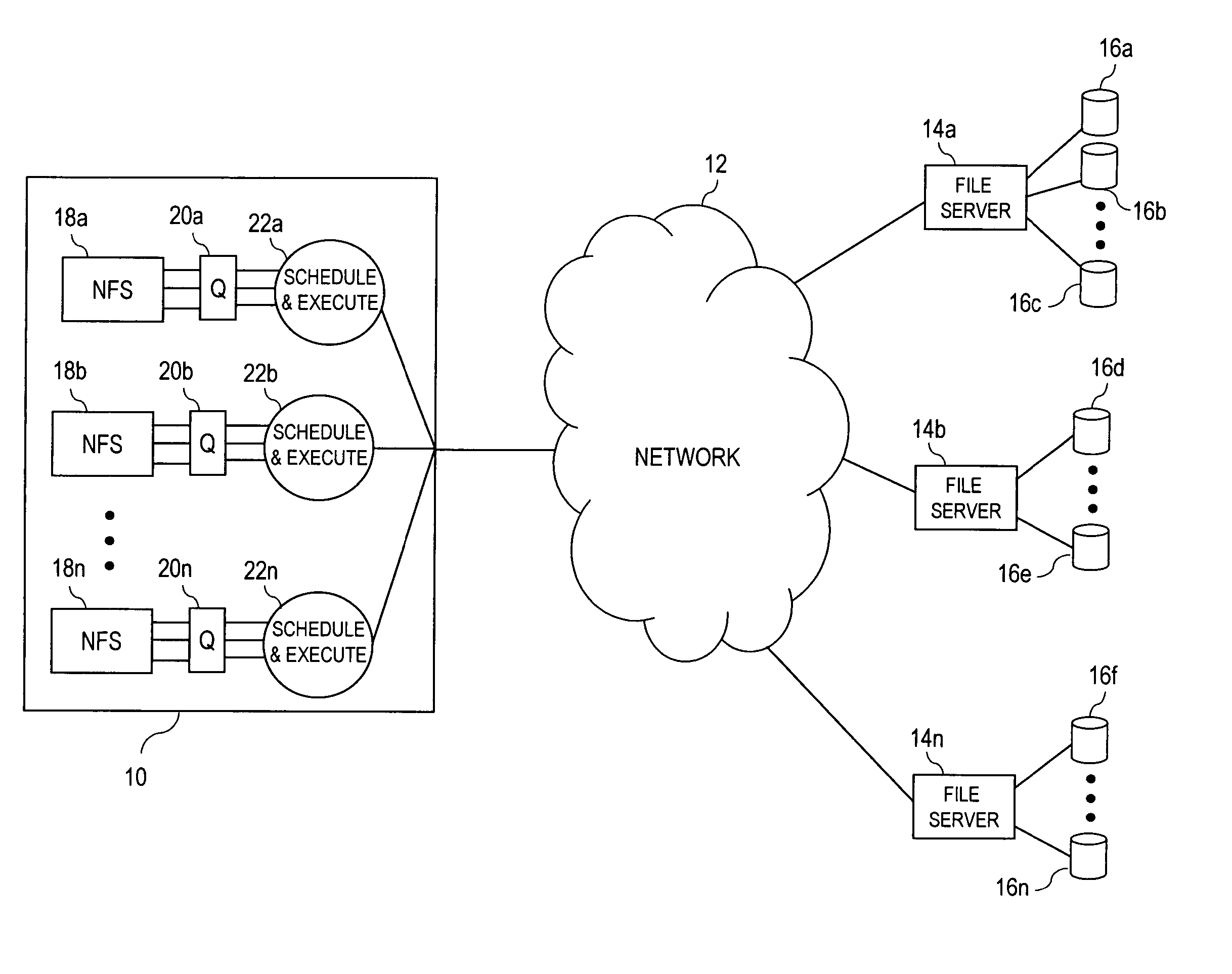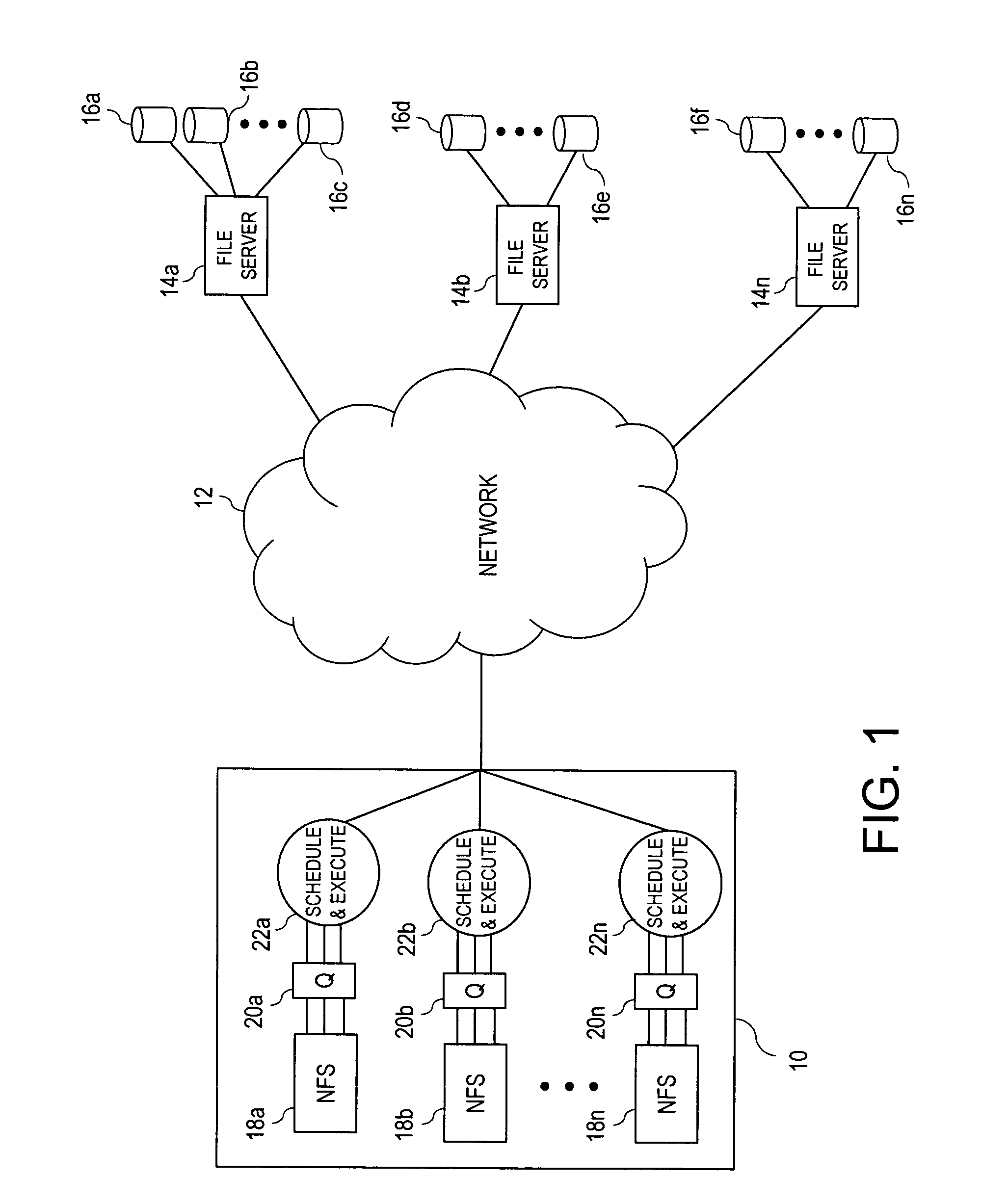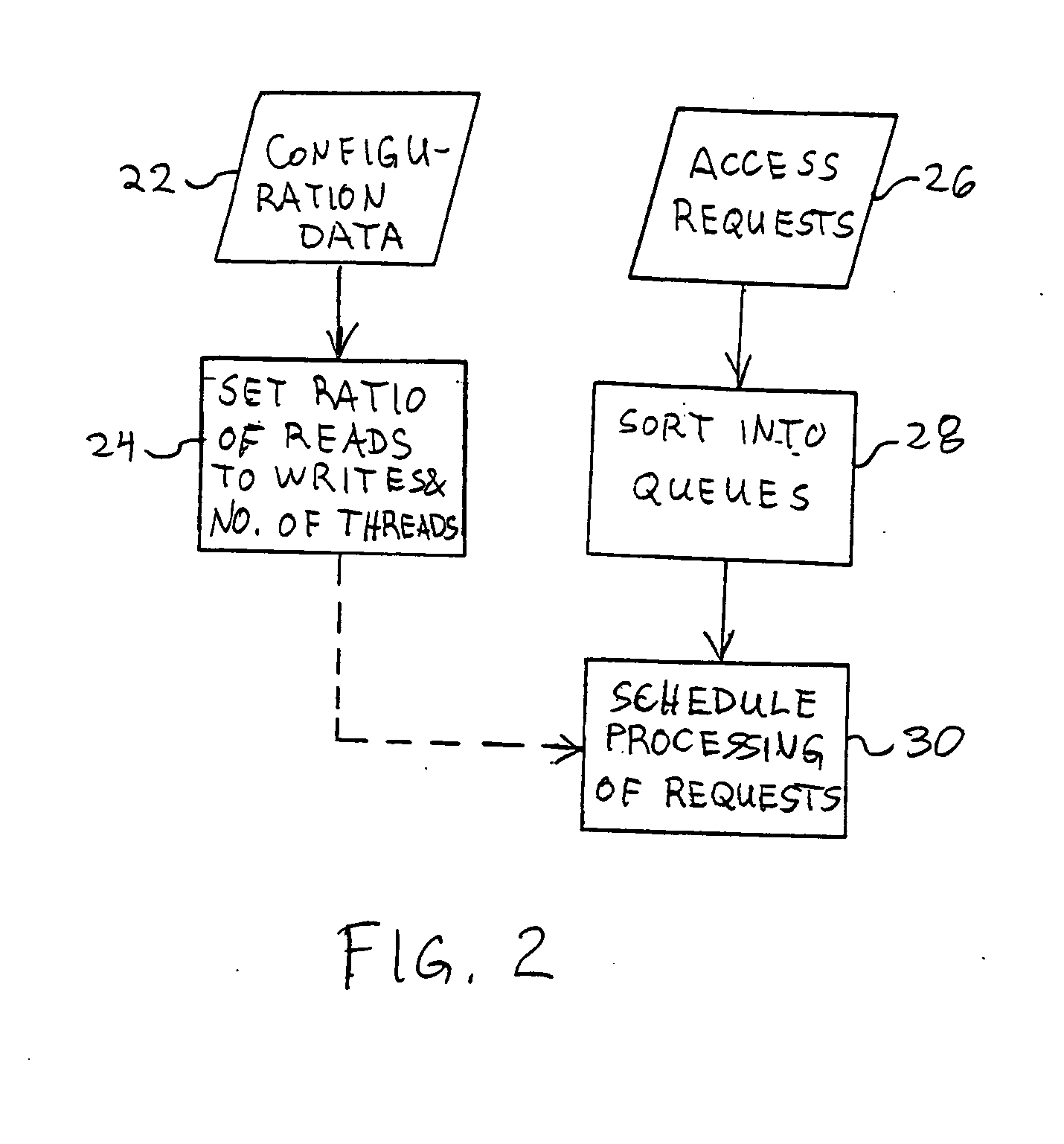Network filesystem asynchronous I/O scheduling
a filesystem and network filesystem technology, applied in the field of filesystem resource acquisition request or access request processing, can solve the problem that no known system is flexible enough to allow users
- Summary
- Abstract
- Description
- Claims
- Application Information
AI Technical Summary
Benefits of technology
Problems solved by technology
Method used
Image
Examples
Embodiment Construction
[0016] A simplified drawing of a system to which the present invention may be applied is illustrated in FIG. 1. Client node 10 is connected via network 12 to at least one filesystem server 14a, 14b, . . . 14n on network 12. Depending on the type of system, each filesystem server 14 may provide connection to one or more data stores 16. In some systems, such as storage area networks, the network 12 may be directly connected to the data stores 16a, 16b, . . . 16n. Client node 10 uses one of client network filesystems 18a,18b, . . . 18n in accessing each data store 16. Client node 10 may be connected to many data stores, e.g.,16a, 16b, . . . 16c, on a single filesystem server, e.g., 14a, as well as many separate data stores, e.g., 16a, 16d, 16f on many different filesystem servers, e.g. 14a, 14b, . . . 14n.
[0017] Any communication requests generated by a client network filesystem, e.g., 18a, will be directed to the filesystem server 14 with responsibility for the data store(s) 16 stori...
PUM
 Login to View More
Login to View More Abstract
Description
Claims
Application Information
 Login to View More
Login to View More - R&D
- Intellectual Property
- Life Sciences
- Materials
- Tech Scout
- Unparalleled Data Quality
- Higher Quality Content
- 60% Fewer Hallucinations
Browse by: Latest US Patents, China's latest patents, Technical Efficacy Thesaurus, Application Domain, Technology Topic, Popular Technical Reports.
© 2025 PatSnap. All rights reserved.Legal|Privacy policy|Modern Slavery Act Transparency Statement|Sitemap|About US| Contact US: help@patsnap.com



